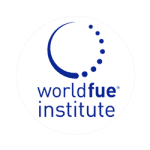Hair Transplant in Summer or Winter?
Winter is usually the preferred season for hair transplantation. Cold weather conditions do not negatively affect the healing process and winter offers a more comfortable experience in terms of post-hair transplant care. Since summer months carry the risk of sweating due to heat and sunlight, winter is generally considered a more suitable option.
Weather Conditions and the Recovery Process during Hair Transplantation
Hair transplantation is a process that is usually completed in one year, including before and after transplantation. After the hair transplantation operation, reddening, scabbing, scabs falling off and shock shedding processes take place. These processes are generally considered completely normal and it takes one year for all the transplanted hair to grow and the success of the treatment to be fully visible.
Flushing and Crusting:
During hair transplantation, redness occurs on the skin as the grafts taken from the donor area are transplanted one by one to the target area. During the healing process after the operation, crusting occurs in this area and these crusts usually fall off within fifteen days.
Shock Shedding Process:
After the scabs fall off, a shock shedding phase occurs within one to three months. In this phase, the remaining parts of the transplanted hair on the skin are shed and the production of new hair strands begins. During the shock shedding phase, the transplanted hair follicles are not damaged.
Things to Consider During the Recovery Process:
Cold Weather: It can reduce swelling and improve blood circulation, but it is important to protect the scalp.
Hot Weather: It can increase the risk of sweating, which can increase the risk of infection.
It is important to keep the scalp clean and moisturized.
Careful maintenance is especially necessary to prevent adverse conditions such as scaling or drying out.
The general health status of hair transplant candidates affects the healing process.
Smoking or unhealthy habits can negatively affect the healing process.
Medication and Vitamin Use:
The use of medication should be avoided except for the doctor’s recommendation.
Vitamin supplements recommended by the doctor can be used when necessary.
Stress and Activity Level:
Physical activities may affect the healing process, excessive exercise should be avoided.
It is important to avoid stress and focus on rest.
It is important to get the necessary nutrients for hair health.
A diet rich in protein and vitamins can support healing.
Following Doctor’s Instructions:
The instructions given by the doctor who performed the hair transplant should be followed.
Regular attendance to control and follow-up appointments should be ensured.
Changes in Post-Hair Transplant Care According to Seasons:
It is important to care after hair transplantation according to the seasons. In winter, it is important to protect the scalp from cold and take precautions against dryness. In summer, it is necessary to protect from the sun and reduce the risk of sweating. Spring and fall months usually offer a comfortable healing process due to their mild weather, but care should be taken against weather changes. Organizing the care after hair transplantation according to seasonal needs ensures a successful recovery process and successful results.
Esteworld plans and implements the hair transplant operation according to the season and the needs of the patient. We keep in touch with the patient before and after the hair transplant operation and answer the patient’s questions in all processes of hair transplantation. For more information about hair transplantation, you can contact us via our numbers.













